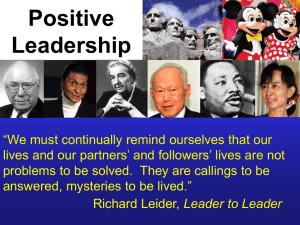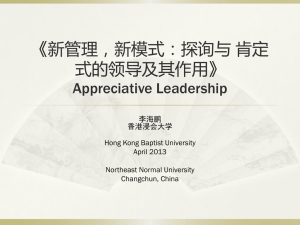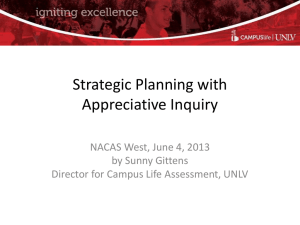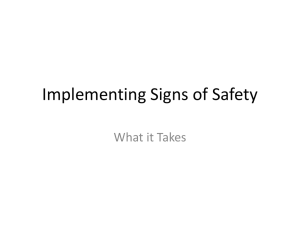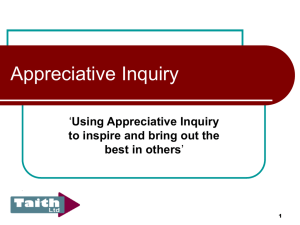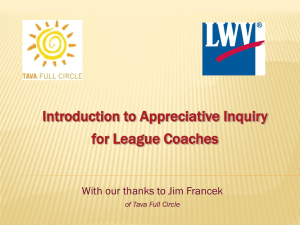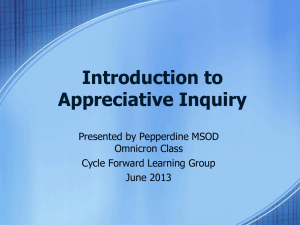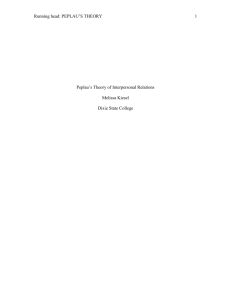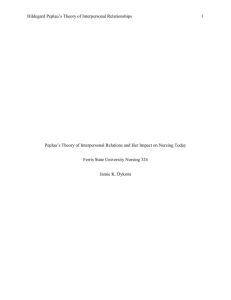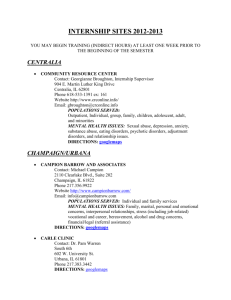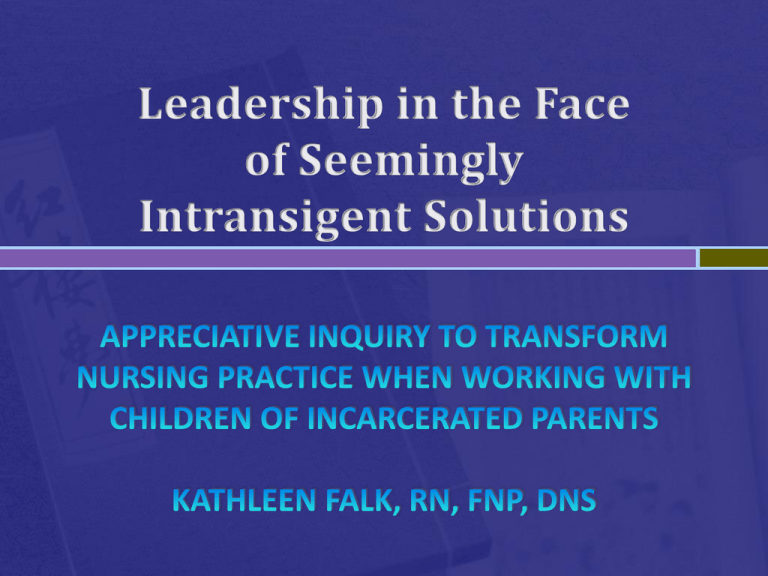
Over the past 40 years, the prison population
doubled.
U.S. 5% of the world’s population and 25% of the
world’s prisoners.
As mass incarceration escalated, so did the
disproportionate rate of African American and
Latina prisoners.
This is a reflection of socio-political factors
unrelated to crime.
Fellner, 2009
Prisons are the largest institution for people with
mental illness.
Among State prison populations:
Bipolar disorders are 24 times higher
Psychotic disorders are 5 times higher
During the natural course of substance abuse
addiction, bipolar disorders and psychotic disorders,
people get arrested.
33% of all IV Drug users will go through the criminal
justice system.
HIV-AIDS is 3 times higher
Rich, Wakeman & Dickman, 2011
Children of incarcerated parents need help to
improve resilience:
social and emotional skills
healthy behaviors
problem solving strategies
Avoid
Violence.
Substance abuse.
High risk sex behaviors.
Do not have opportunities to develop skills
Experience profound sense of loss
Confusion,
Abandonment,
Insecurity.
Shame and Guilt
Decline in quality of life
Role Stress: New roles in reconstructed families
Conflicted fidelity to parents
Boss, 2006; De Masi & Bohn, 2010
Bandura’s Social Cognitive Learning
Theory
Bowlby’s Attachment Theory
Peplau’s Interpersonal Relationship
Theory
Erikson, Tomlin & Swain’s Modeling
and Role Modeling Theory
Positive Psychology
• Intervention
• Helping Role
• SelfAwareness
• Stages of
Relationship
• 5 Rights of UM
• Modeling
• Embrace
Worldview of
Client
• “Client
Centered
• Care”
Peplau
Helping
Roles
Erickson
Peplau
Stage
Role
Modeling
• Interventions
Lead to SelfCare
Positive Relationship between
Risk and Poor Psychological
Outcomes
Protective Factors have
opposite Effect
Increase
Protective
Factors
Decrease
Psychological
Disorders
Risk
Poor
Outcome
NURSE-MENTOR MODEL FOR CHILDREN OF INCARCERATED PARENTS
Modeling and Role Modeling
Good Health
Sexual Violence
Prevention
Anti-bullying
Health Assessment
Role Model
Resource
Facilitator
Counselor
Resilience
Awareness
Advocate
Responsible
Decision
Making
Surrogate
Prevention
HIV AIDS &
Teen Pregnancy
Prevention:
Depression
Truancy
Alcohol and
Substance Use
HIV Infection
Pregnancy
Health Care
Referral for
Child & Family
Positive
Attitudes
& Values
Social
Skills
Teacher
Leader/
Change Agent
NURSE-MENTOR MODEL FOR CHILDREN OF INCARCERATED PARENTS ©FALK, 2013
Coping Skills
Grew out of the positive psychology
movement; Seligman countered the medical
model of pathology and diagnosis.
Virtues are of equal importance.
Cooperrider and Srivastva theorists
Within all human systems there is an
untapped core of positive energy.
Strength-based approach to transforming
human systems
Appreciative Leadership defined
‘The relational capacity to mobilize creative
potential and turn it into positive power – to
set in motion positive ripples of confidence,
energy, enthusiasm, and performance – to
make a positive difference in the world.’
Whitney & Trosten-Bloom, 2010
1. They are willing to engage with other
members of their organization or community
to create a better way of doing business or
living.
2. They are willing to learn and to change.
3. They truly believe in the power of the
positive.
4. They care about people, often describing the
work of their organization or business in terms
of helping people learn, grow and develop.
Whitney & Trosten-Bloom, 2010
1) It is relational;
(2) It is positive;
(3) It is about turning potential into positive
power; and
(4) It has positive rippling effects.
A clear movement away from the habitual,
traditional and individualistic command and
control practices of leadership toward a new
normal: the positive, socially generative
principles, strategies and practices of
Appreciative Leadership.
Appreciative Inquiry to Practice Change: Appreciative Topic and 4-D Cycle
Strategic Focus
Appreciative
Interviews
DESTINY
Learning from reflection
cycles. Identifying
questions for next AI cycle.
Sustaining
DISCOVERY
Surface Individual &
Collective Motivation &
aPP
Meaning
Appreciating
DREAM
POSITIVE CORE:
APPRECIATIVE TOPIC
Framing AI
DESIGN
Planning the 1st steps.
Identifying small groups:
“Pan, Do Assess”
Co-constructing
Visioning a transformed
Practice
Innovating
Phase I
Phase II
Sample
Interview Data
Data Analysis, Concepts &
Construct Mapping
2 Retreats
AI Topic
Discovery
Dream
Design
Research
Procedures
Phase III
Implementing the
Action Plan
Phase IV
Destiny Phase
Evaluation,
Conclusions & Implications
Family
Focused
Care
Time &
Privacy
FHPAST
POTENTIAL
Positive
Role Model
Vocation
Academic
Plans
Increase
Contact
Nursing Practice: Use mentoring
With other vulnerable populations
In public health initiatives for high-risk behaviors
To promote access to silent populations
Nursing Education: Use Peplau & Erickson et al.
RN to BS students work with vulnerable groups
Students work with high risk populations
Innovative research designs
Nursing Research
AI facilitates leadership roles (IOM)
Qualitative
Grounded Theory
Phenomenology
Quantitative
Development &
psychometric testing of
FHPAST for younger children.
Study Changes in responses
over time
Measurement of resilience;
adaptive coping skills post
intervention.
Measurement of impact of
nurse-mentoring on
development of social and
emotional skills
http://www.youtube.com/watch?v=9ujYTUZ3C2Y


